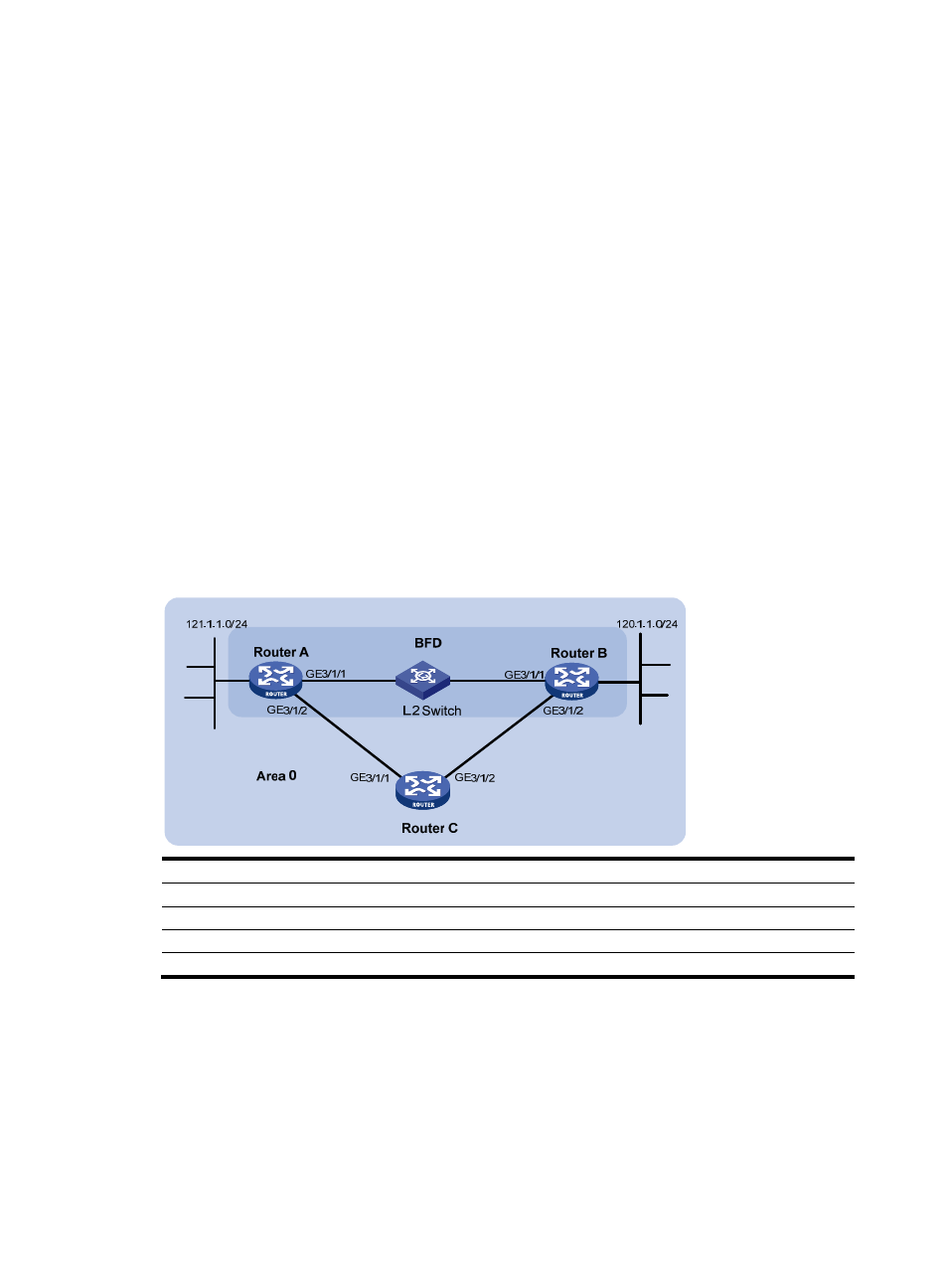Configuring bfd for is-is, Network requirements, Configuration procedure – H3C Technologies H3C SR8800 User Manual
Page 206

190
[RouterC] isis 1
[RouterC-isis-1] area-authentication-mode md5 10Sec
[RouterC-isis-1] quit
5.
Configure routing domain authentication. Specify the MD5 authentication mode and password
1020Sec on Router C and Router D:
[RouterC] isis 1
[RouterC-isis-1] domain-authentication-mode md5 1020Sec
[RouterC-isis-1] quit
[RouterD] isis 1
[RouterD-isis-1] domain-authentication-mode md5 1020Sec
[RouterD-isis-1] isis 1
Configuring BFD for IS-IS
Network requirements
•
As shown in
, IS-IS is enabled on Router A, Router B and Router C that are reachable to
each other at the network layer.
•
After the link over which Router A and Router B communicate through the Layer-2 switch fails, BFD
can quickly detect the failure and notify IS-IS of the failure. Router A and Router B then communicate
through Router C.
Figure 70 Network diagram
Device Interface IP
address
Device
Interface
IP address
Router A
GE3/1/1
192.168.0.102/24 Router B
GE3/1/1
192.168.0.100/24
GE3/1/2
10.1.1.102/24
GE3/1/2 13.1.1.1/24
Router C
GE3/1/1
10.1.1.100/24
GE3/1/2
13.1.1.2/24
Configuration procedure
1.
Configure IP addresses for interfaces. (Details not shown)
2.
Configure IS-IS basic functions:
# Configure Router A.
<RouterA> system-view
[RouterA] isis
[RouterA-isis-1] network-entity 10.0000.0000.0001.00